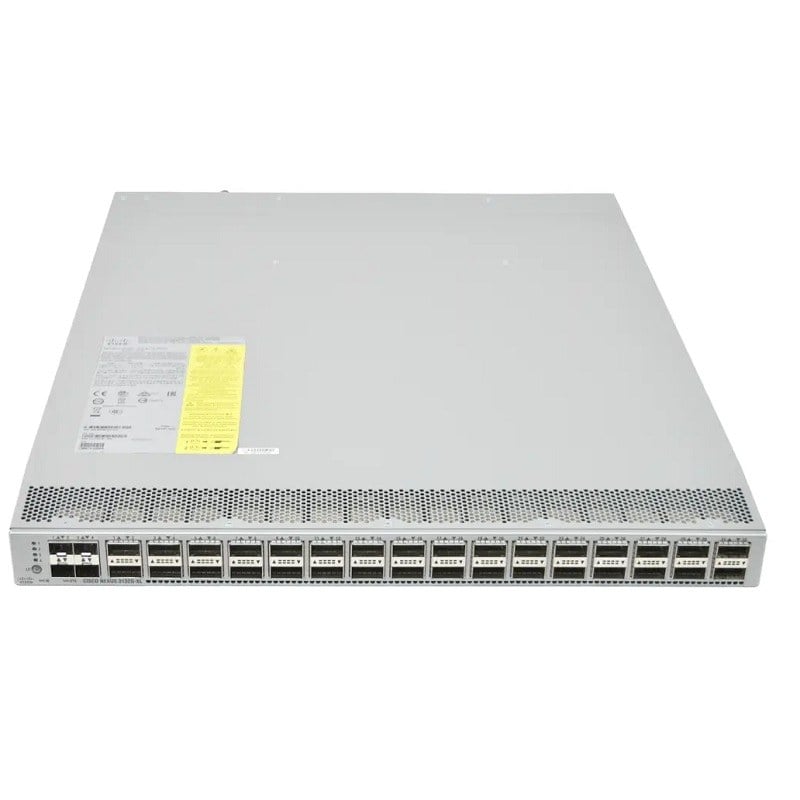Description
High Density Networking
The HPE JG726A High-density networking refers to the ability of a network to accommodate a large number of connected devices within a limited physical space. High-density networking is becoming increasingly important as organizations look to connect more devices, such as servers, storage systems, and network-attached devices, in order to meet growing business demands.
Some of the key benefits of high-density networking include:
- Increased Connectivity: High-density networking allows organizations to connect a large number of devices to the network, improving overall network connectivity and performance.
- Improved Resource Utilization: High-density networking enables organizations to maximize the use of their existing network infrastructure, reducing the need for additional hardware and reducing overall network costs.
- Increased Reliability: With high-density networking, organizations can reduce the number of single points of failure within the network, improving network reliability and reducing downtime.
- Simplified Network Management: High-density networking can simplify network management by reducing the number of network devices required, making it easier to manage and maintain the network.
- Increased Bandwidth: High-density networking can provide increased bandwidth, allowing organizations to support growing bandwidth requirements and reduce network congestion.
Reliability and Scalability
Reliability and scalability are two important attributes of a network.
Reliability refers to the ability of a network to operate continuously and consistently, without experiencing downtime or failure. A reliable network is essential for organizations to meet their business needs, as downtime can have a significant impact on productivity and revenue.
Scalability refers to the ability of a network to grow and adapt to changing business needs. As organizations grow, they often require more network resources, such as additional bandwidth, devices, and applications, to support their operations. A scalable network is able to accommodate these changes, without requiring significant modifications to the existing network infrastructure.
Some of the key benefits of a reliable and scalable network include:
- Improved Availability: A reliable and scalable network helps to ensure that network resources are always available, improving overall network availability and reducing downtime.
- Better Resource Utilization: A scalable network enables organizations to maximize the use of existing network resources, improving resource utilization and reducing the need for additional hardware.
- Ease of Expansion: A scalable network can easily accommodate new devices and applications, making it easier for organizations to expand their network as their business grows.
- Improved Network Performance: A reliable and scalable network can help to improve network performance, reducing network congestion and improving response times.
- Increased Agility: A scalable network enables organizations to quickly and easily respond to changing business needs, allowing them to adapt to new technology changes or requirements.
In conclusion, a reliable and scalable network is essential for organizations to meet their business needs and remain competitive in today’s fast-paced business environment.
Advanced Networking Capabilities
The HPE JG726A Advanced Networking Capabilities refer to the advanced features and functions of a network switch that enhance its performance and functionality beyond basic switching. Some of the common advanced networking capabilities of switches include:
- Quality of Service (QoS): Allows the switch to prioritize network traffic based on different criteria such as IP address, protocol, or port number.
- Virtual LANs (VLANs): Enables the switch to create multiple virtual networks on a single physical network, providing better network segmentation and security.
- Link Aggregation (LAG): Provides the ability to bundle multiple physical network connections into a single logical connection, increasing network bandwidth and reliability.
- Spanning Tree Protocol (STP): Helps prevent network loops and other network topology issues, ensuring the stability of the network.
- Multicast: Supports the efficient delivery of data to multiple destinations in a single transmission, reducing network traffic and improving performance.
- Network Access Control (NAC): Enables the switch to enforce security policies by controlling which devices are allowed to access the network.
- Virtual Routing and Forwarding (VRF): Provides the ability to create multiple virtual routing instances on a single physical switch, providing better network segmentation and security.
These advanced networking capabilities are important for organizations to ensure the stability, security, and scalability of their network infrastructure.
Main Information about the HPE JG726A
- Manufacturer: HPE
- Part Number or SKU# JG726A
- Product Type: Managed Switch
- Total Number of Ports: 32 Ports
Technical Information
- Device Type : Switch – 32 Ports – L3 – Managed
- Enclosure Type : Rack-Mountable – 1u
- Ports : 32 X 40 Gigabit Qsfp+
- Performance : Throughput : 1905 Mpps, Routing/Switching Capacity : 2560 Gbps
- Capacity : Ipv4 Routing Table Entries : 16000, Ipv6 Routing Table Entries : 8000
- Mac Address Table Size : 288k Entries
- Jumbo Frame Support : Yes
- Routing Protocol : Ospf, Bgp-4, Is-Is, Rip-1, Rip-2, Igmp, Vrrp, Ospfv2, Ospfv3, Static Ipv6 Routing, Ripng, Is-Isv6, Bgp-4+, Mpls, Bidirectional Forwarding Detection (Bfd)
- Remote Management Protocol : Snmp 1, Telnet, Snmp 3, Snmp 2c, Tftp, Cli
- Authentication Method : Secure Shell (Ssh), Radius, Tacacs+, Secure Shell V.2 (Ssh2)
- Features : Flow Control, Dhcp Support, Bootp Support, Arp Support, Vlan Support, Ipv6 Support, Sntp Support, Weighted Fair Queuing (Wfq), Weighted Random Early Detection (Wred), Sflow, Spanning Tree Protocol (Stp) Support, Virtual Route Redundancy Protocol (Vrrp) Support, Multiple Spanning Tree Protocol (Mstp) Support, Tunneling, Access Control List (Acl) Support, Quality Of Service (Qos), Device Link Detection Protocol (Dldp) Support, Equal-Cost Multipath (Ecmp), Bidirectional Forwarding Detection
- Ram : 4 Gb – Sdram
- Flash Memory : 512 MB
Expansions and Connectivity
- Interfaces : 32 X 40gbit Lan – Qsfp+ 1 X Serial (Console) – Rj-45 1 X Management (Lan) – Rj-45 1 X Usb 2.0
Power
- Power Device : Internal Power Supply
- Installed Qty : 0 (Installed) / 2 (Max)
- Power Redundancy : Optional
- Power Redundancy Scheme : 1+1 (With Optional Power Supply)
- Power Consumption Operational : 409 Watt










